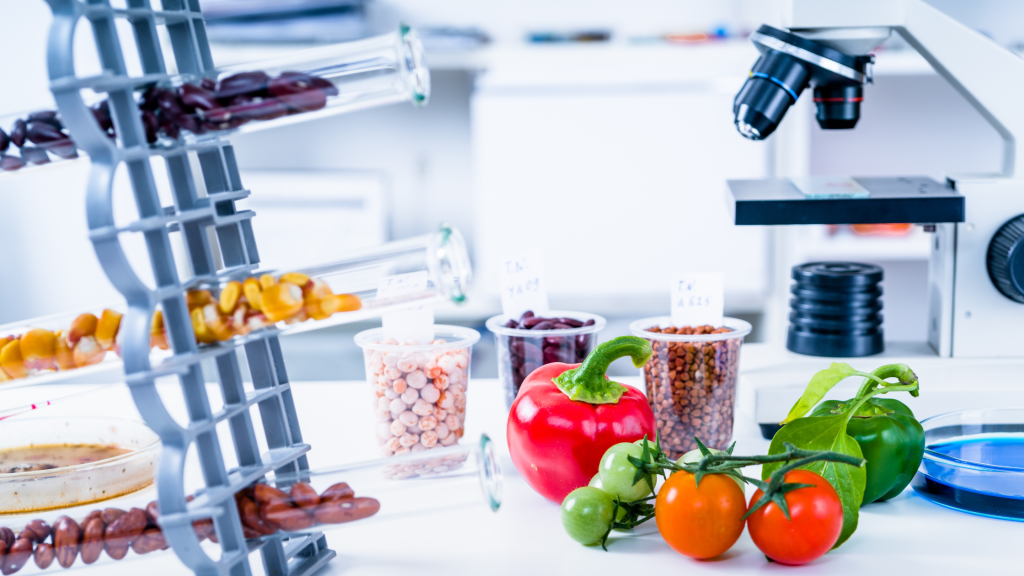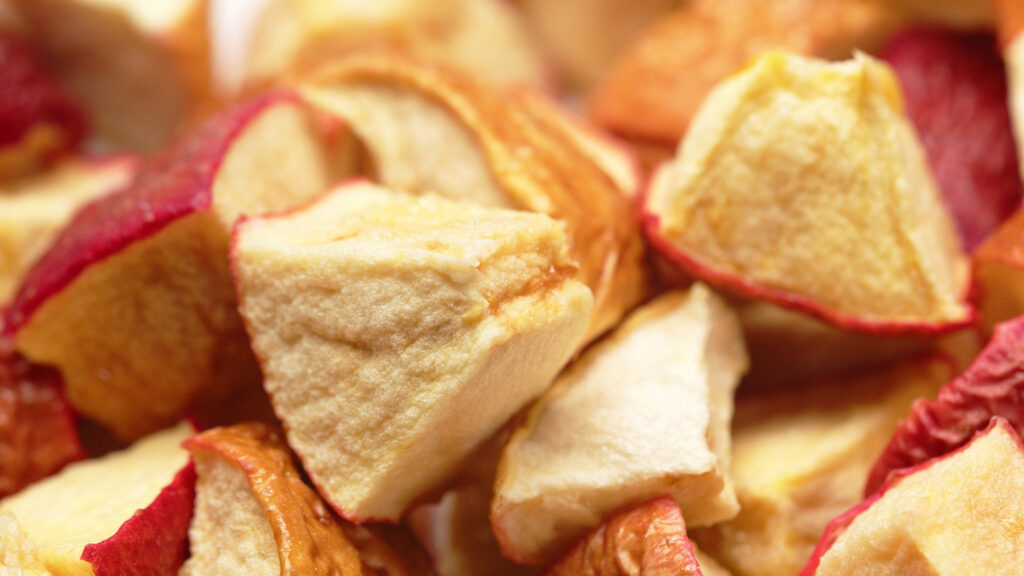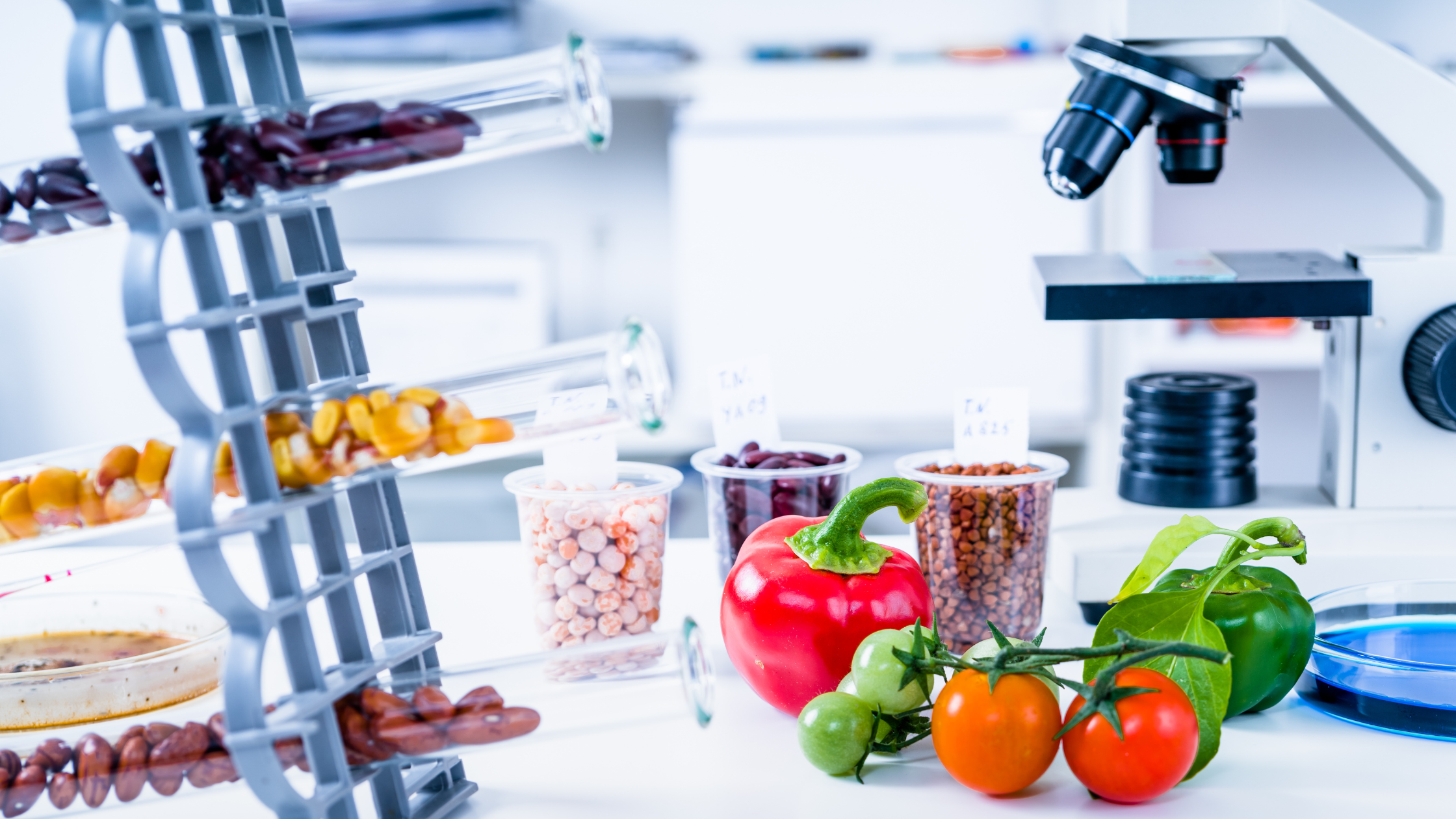How moisture content shapes your drying strategy?
Moisture content is the single most important factor in determining how foods are dried, how long the process takes, and the quality of the final product. Whether you’re producing dried fruit snacks, shelf-stable meals, or innovative new foods, understanding how water behaves in different ingredients is key to choosing the right drying method and achieving consistent results. With the rise of advanced technologies like microwave dehydration, producers now have more control and flexibility than ever before.

Why moisture content matters in food drying?
Every food starts with a different amount of water inside. Leafy greens, berries, and meats are high-moisture foods, while grains, nuts, and some root vegetables are naturally lower in water. The amount of moisture in a food affects everything from drying time and energy use to texture, shelf life, and even taste.
- High-moisture foods need longer, gentler drying to prevent case hardening (where the outside dries too fast and traps moisture inside) and to preserve nutrients and texture.
- Medium-moisture foods dry more quickly but still require careful control to avoid uneven drying or loss of flavor.
- Low-moisture foods can be dried rapidly, but over-drying can make them brittle, tough, or unpalatable.
Too much moisture left in the final product can lead to spoilage, mold, or poor shelf stability. Too little can result in a product that is crumbly, hard, or lacking in flavor. This delicate balance is why measuring and managing moisture content is essential for commercial food drying, snack production, and food innovation.
Comparing dehydration approaches for different moisture levels
High-Moisture foods
Examples: berries, leafy greens, tomatoes, fish, and fresh meats.
These foods contain a lot of water bound within their cells. Removing this moisture takes time and precision. Traditional air drying or freeze-drying can be slow and energy-intensive. If the process is rushed, the surface may dry out before the inside, trapping moisture and risking spoilage.
Microwave dehydration, especially under vacuum, offers a major advantage here. The energy from microwaves penetrates the food, causing water molecules throughout the product to vibrate and evaporate more evenly and quickly. Studies show that microwave vacuum drying can speed up the process and improve rehydration rates, while preserving color, nutrients, and texture better than conventional methods.
Medium-Moisture foods
Examples: apples, carrots, potatoes, mushrooms, cooked grains.
These foods dry more predictably, but still benefit from controlled conditions. Conventional drying methods can work well, but microwave dehydration allows for faster, more uniform moisture removal. The result is a product that retains its natural color and flavor, with less risk of case hardening or nutrient loss.

Low-Moisture Foods
Examples: nuts, seeds, grains, dried legumes.
These foods already have low water activity and require less drying. However, even here, careful moisture management is important. Over-drying can make products brittle or degrade sensitive nutrients. Microwave dehydration allows for precise control, stopping the process at the ideal endpoint for maximum quality and shelf life.
How moisture content influences product quality and cost
- Texture: The right moisture level means dried fruit is chewy, not tough; dried vegetables are crisp, not leathery; and dried meats are tender, not brittle.
- Shelf Life: Lower moisture means less risk of spoilage, but going too low can impact palatability.
- Processing Costs: High-moisture foods take longer and use more energy to dry. Faster, more efficient methods like microwave dehydration can reduce costs and improve throughput.
- Nutrient Retention: Gentle, uniform drying preserves vitamins, antioxidants, and natural flavors.
The science behind microwave dehydration
Microwave dehydration works by sending electromagnetic waves into the food, causing water molecules to vibrate and heat up internally. In vacuum microwave drying, this process happens at lower temperatures, which protects sensitive nutrients and prevents surface overheating.
- Uniform Drying: Microwaves penetrate the food, drying it from the inside out. This reduces the risk of case hardening and ensures even moisture removal, especially important for thick or dense foods.
- Speed: Drying times are dramatically reduced, improving efficiency and reducing energy costs.
- Quality: Studies show that microwave vacuum drying delivers higher rehydration rates and better preservation of color, flavor, and nutrients compared to hot air or conventional drying.
Adapting Drying Strategies with Microwave Technology
Microwave dehydration is highly adaptable. For high-moisture foods, it allows for gentle, thorough drying without damaging the product’s structure. For medium- and low-moisture foods, it offers rapid, controlled moisture removal, reducing the risk of over-drying or quality loss.
- High-moisture foods: Microwave vacuum drying prevents surface hardening and preserves texture and nutrients.
- Medium-moisture foods: The process can be fine-tuned for uniform results, reducing shrinkage and color loss.
- Low-moisture foods: Precise endpoint control avoids brittleness and maintains product appeal.
Measuring and managing moisture content for commercial success
Accurate measurement of moisture content is crucial at every stage of food processing. Advanced sensors and near-infrared imaging now allow producers to monitor moisture levels in real time, ensuring consistent quality and safety. This is especially important in large-scale operations using commercial freeze dryers, industrial freeze machines, or microwave drying equipment.
Moisture content plays a crucial role in how effectively food dehydrates, directly impacting texture, shelf life, and quality. The right drying strategy, matched to the moisture profile of your ingredients, determines everything from product quality to shelf life and profitability. Advanced drying technologies like microwave dehydration are setting new standards for efficiency, quality, and sustainability in food tech and product development.
For companies looking to lead in food innovation, investing in precise moisture management and cutting-edge drying technology is essential. Whether you’re producing dried fruit snacks, plant-based crisps, or next-generation pet treats, microwave dehydration offers the flexibility and performance needed to meet today’s market demands.
Explore more about how EnWave’s microwave dehydration solutions can transform your food processing strategy at enwave.net or contact us.
Further Reading:
Effect of microwave treatment on dehydration kinetics and moisture
Monitoring of moisture contents and rehydration rates of microwave dried foods
A Comparative Analysis of Thin-Layer Microwave and Convective Dehydration
Effects of vacuum microwave dehydration on nutritional properties
Advancing Microwave Technology for Dehydration Processing
Microwave Drying Overview – ScienceDirect Topics
Comparative Study on Drying Characteristics and Quality of Apple


